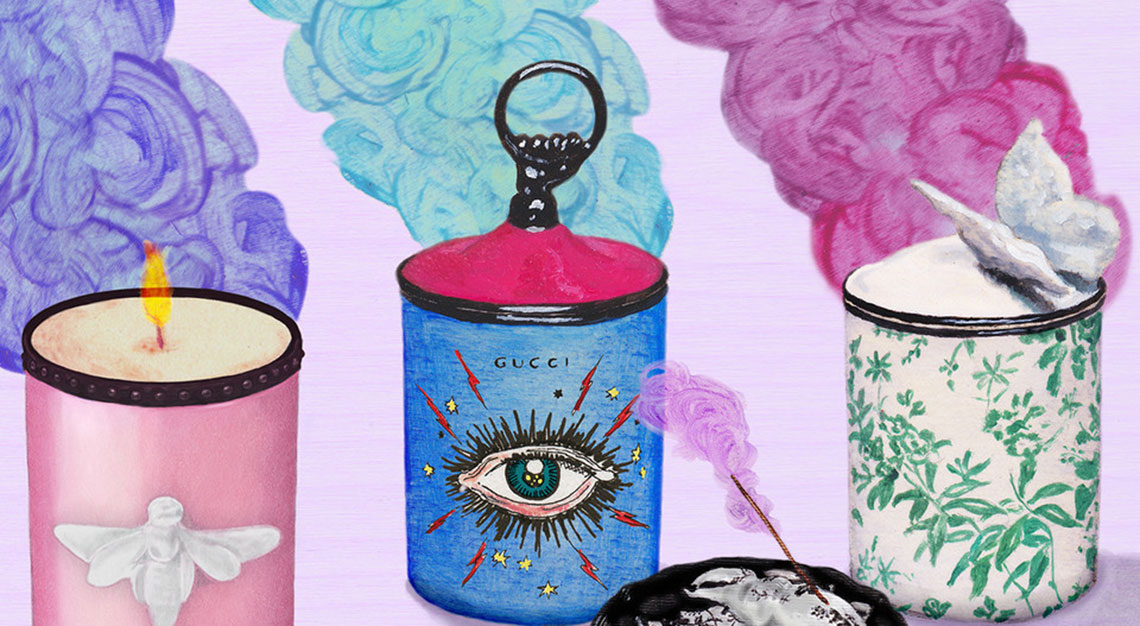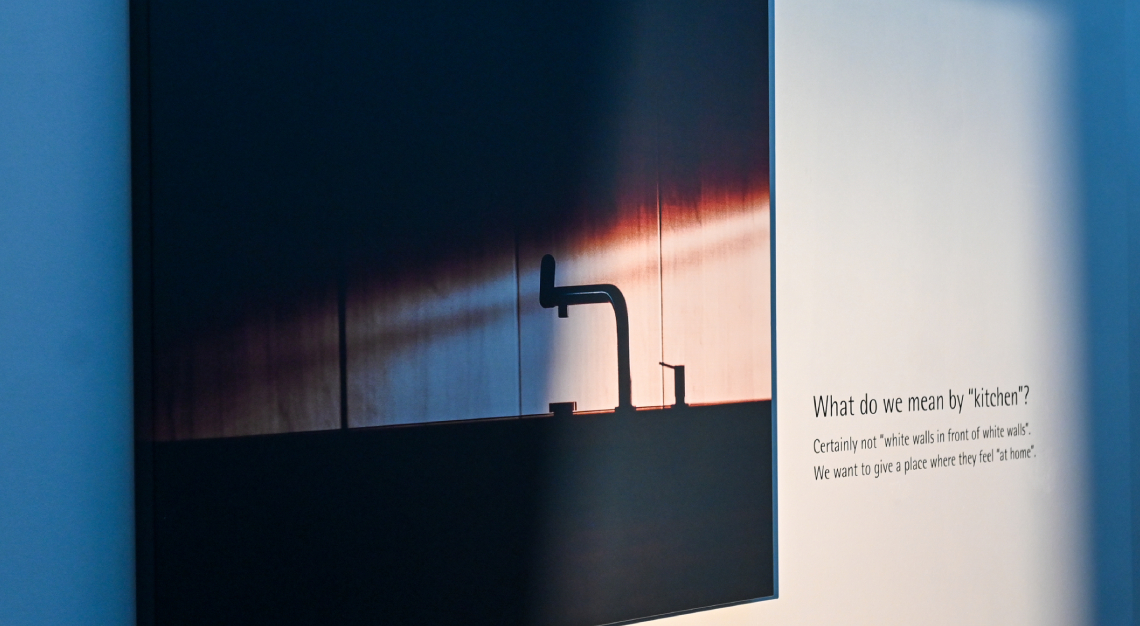The luxury candle brand finds inspiration from its bohemian founders, dipping into its archives in an effort to expand into the home decor sector
Those candles that top every interior and fashion designer’s “Things I Can’t accLive Without” list in glossy pubs going back decades? You know the ones: Wax that seems to have been bathed in moonlight; the transparent vessel with the look and feel of a highball glass; the jaunty, deconstructed typography; that soul-skimming scent. Yes, we’re talking about Diptyque, a brand that’s now inseparable from the luxury candle industry.
In a bid to reach back to its artisanal decor roots—today’s retail climate elevates maker-made over manufactured, after all—Diptyque has partnered with French creatives to introduce a limited-edition home accessories collection that celebrates the parfumerie‘s legacy. Averaging about three collaborations per year, the company tasked three female artists, Solenne Belloir, Sarah Naud and Audrey Demarre, with creating this latest line. The handmade pieces are available at Diptyque boutiques on Prince Street in New York City, on North Beverly Drive in Beverly Hills and at the maison‘s original Boulevard Saint-Germain location.
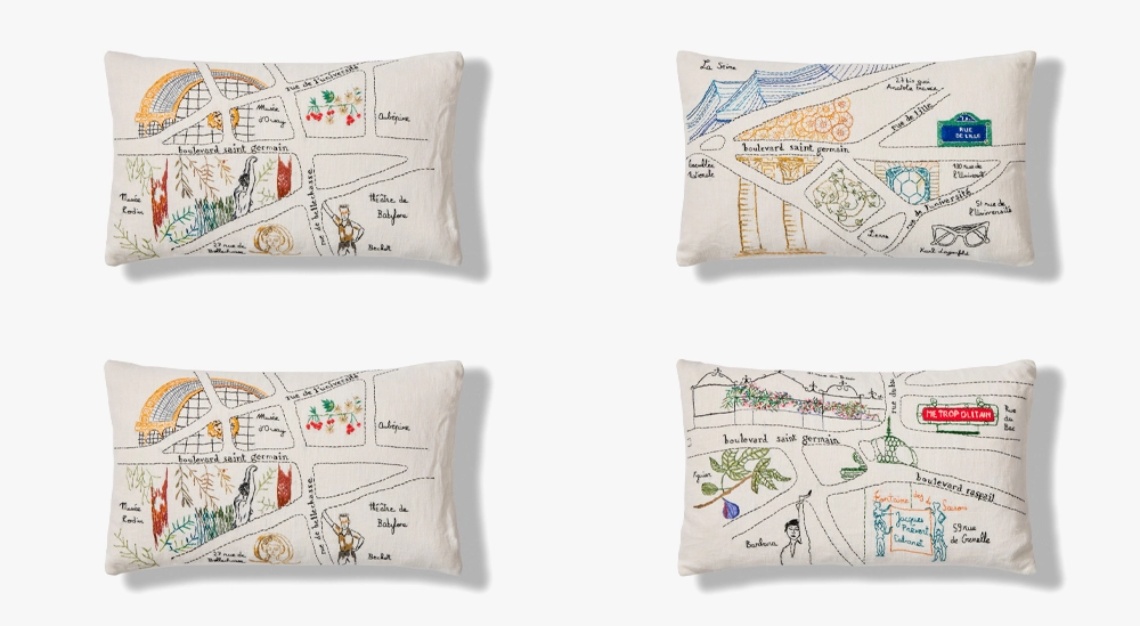
Despite Diptyque’s polished luxury appeal and department store placement, the brand did not emerge from the minds of Madison Avenue marketers; its origin story has much artsier roots. Inseparable friends with bohemian spirits—Christiane Gautrot, Yves Coueslant and Desmond Knox-Leet—concocted the candles in their magical studio/shop in Paris’ Latin Quarter. They opened the location in 1961 to share their textiles and wall coverings with curious customers, along with treasures they gathered on their travels.
Candles in glass jars, then soaps wrapped in silk paper and a perfume, all boasting the now iconic oval label with dancing letters, were offered among the decor and curiosities in the bazaar-like boutique at 34 Boulevard Saint-Germain. The chic emporium is still in operation today, exuding otherworldly yet distinctly Parisian ambiance. The founders’ auras waft through the townhouse as surely as the delicious scents.
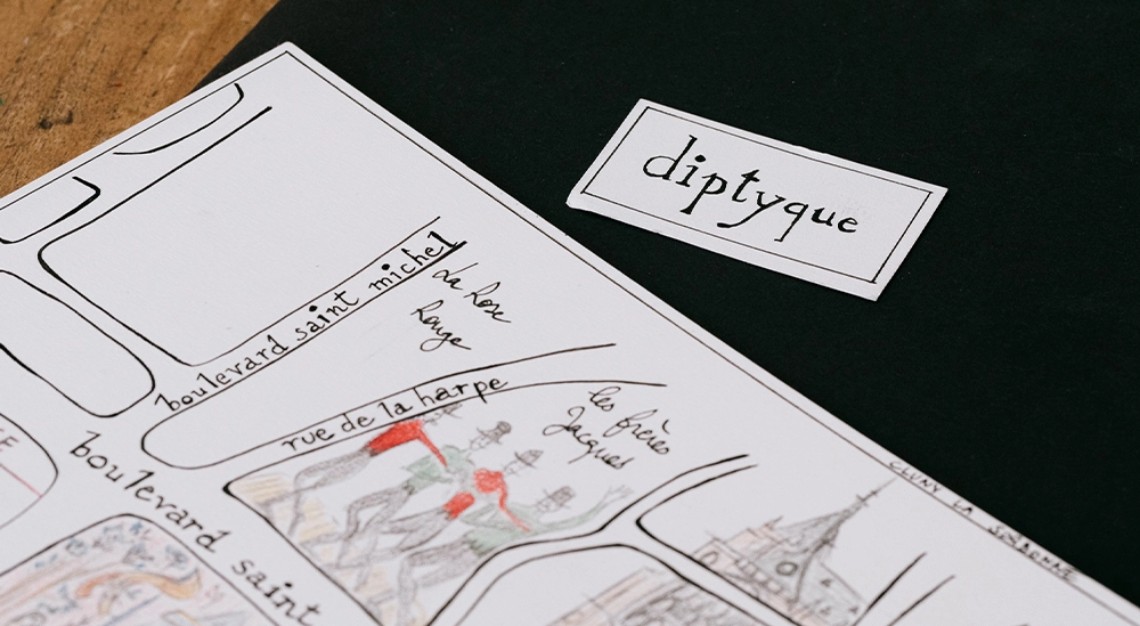
“Our founders were in love with craftsmanship, and these artists’ spirits are in line with Diptyque’s,” said Laurence Semichon, senior vice president of perfume and beauty for the company, which is privately owned by a London-based private equity firm. The partnerships were not marketing briefs, she notes. Rather, the maison granted them creative control. “It’s a matter of affinities,” Semichon points out.
Inspired by details and patterns in the Latin Quarter, ceramicist Solenne Belloir made five pairs of candlestick holders in six earthy hues. The pieces imbue architectural forms with organic qualities that reveal the touch of the creative’s hand. Sculptor Sarah Naud created twisted concrete pedestals. The raw finish amplifies the strength of the swirled structures meant to showcase Diptyque jars, along with a mismatched set of holders for tapered candles. On the softer side, fibre artist Audrey Demarre hand-embroidered 12 pillows with maps made of thread. Her renderings tell the story of the brand’s Paris storefront, depicting Boulevard Saint-Germain dotted with sweets, blooms, buildings and other charming tidbits.
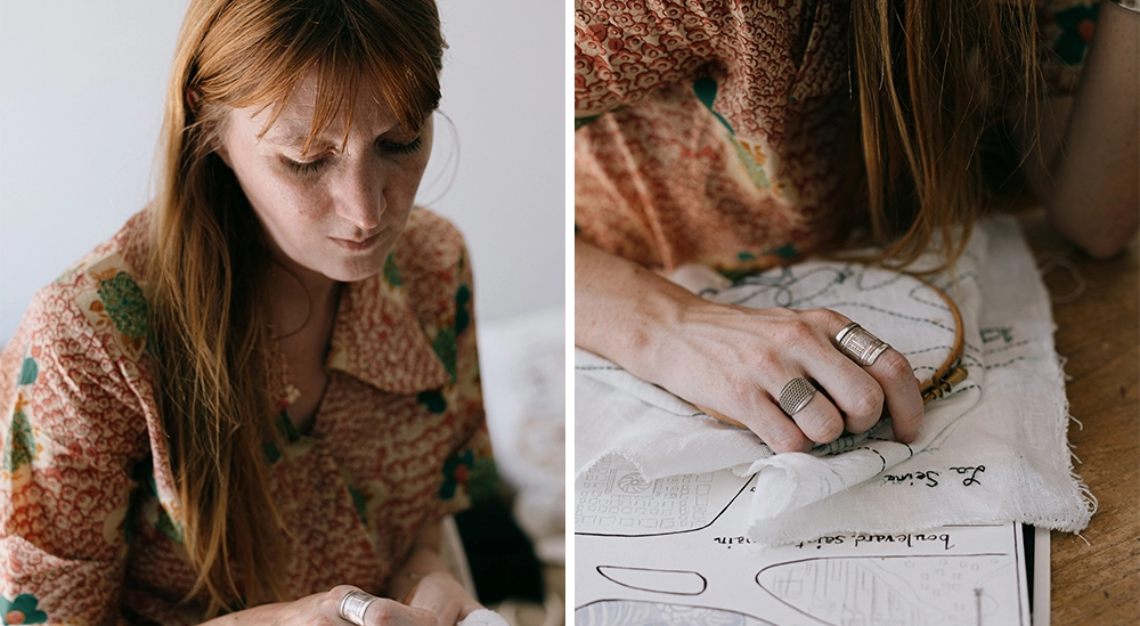
The brand is also dipping its toe into other areas of home decor. Revisiting the founders’ earlier endeavors, Diptyque introduced wall coverings last year. There are currently 10 available for sale online; all are takes on original 1960s designs. Styles include Basile Frieze, a reinterpretation of a bold Art Deco pattern that Gaoutrot designed in 1963 as a textile, and Les Lilas Panoramic Décor, a mural reproduction of artwork by Knox-Leet. If these find success, it could be possible that Diptyque may continue to draw from its archives, which sit atop the Boulevard Saint-Germain shop.
The parfumerie has carried its efforts to the table, too. There are dishes fired in a faience factory in Gien, France, and spiral goblets and flutes hand-blown in Italy. Table linens would be a logical next step, as many of the founders’ designs, after all, were conceived as textiles. Business of Home reports that the company will introduce lighting in 2023 and expand into other home categories, possibly rugs, furniture and paint, in the coming years.
On the gifting side, there are handblown glass ornaments and tiny crystalline trees topped with gold stars. And for the first time, limited-edition holiday candles—in pine tree green, midnight blue and a claret colour, featuring scents that evoke wood fires, coffee and chocolate—come in jars adorned with white, silver and gold stars. The founders, those starry-eyed bohèmes, would most certainly approve.
This article was first published on Robb Report USA


